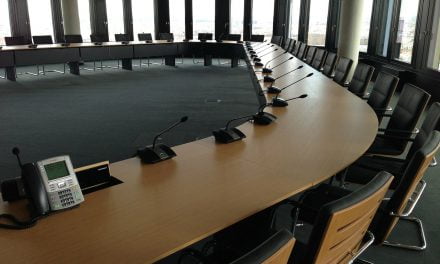This article examines Bank of America’s proposed principal reduction program scheduled to go into effect in May 2010.
In preparation for the deluge of single family resident (SFR) foreclosures expected to wash over the country, and California in particular, by the end of 2010, Bank of America (B of A) has just released information on a program one would not expect from the nation’s largest bank: a $3 billion principal reduction program for defaulting homeowners on negative-amortization adjustable rate mortgages (ARMs) with loan-to-value (LTV) ratios exceeding 120% of the home’s current market value.
While mortgage lenders resist handing out any type of loan modifications, despite being advised and even pressured by the government to do so, B of A claims it is now taking the lead. The initial B of A model seeks to conditionally (read: unlikely) cut up to 30% off the principal of 45,000 home mortgages nationally.
This program is very limited in breadth and scope. It is geared to engage only those homeowners with ARMs containing payment schedules which have produced an increased loan balance due to negative amortization – the failure to pay all interest as it accrues. The principal reduction program will not be available to underwater homeowners with fixed rate mortgages or ARMs with amortized payment schedules. B of A claims their goal is to reduce homeowners’ monthly payments to an amount equal to 31% of their household income – the parameter set by the federal government two years ago, in 2008, based on long-standing fundamentals of mortgage lending.
B of A’s labeling of their proposed “principal reduction” program is a very misleading term, with the true meaning hidden behind a veil of very skillfully-woven rhetoric. An analysis of this program reveals that it will be limited to a very narrow spectrum of homeowners. Candidates for this program includes only those homeowners who have the nastiest of option-ARMs and two-year rollover ARMs which were structured to allow negative amortization of up to 125% of the original loan amount.
Option ARMs allow homeowners to make payments that do not cover interest as it accrues, instead of fully amortizing the monthly principal and interest payments. The two-year rollover ARM (semantically referred to by B of A as a “two-year hybrid loan”) has fixed monthly payments less than the amount of interest accruing for the first two years before resetting to fully amortize the loan.
Further, to qualify for a principal reduction, the homeowner must be in default for at least 60 days on his negative-amortization ARM.
Homeowners who qualify for B of A’s principal reduction will find their loan balances bifurcated, i.e. divided into two parts, but not reduced – at least not yet. One part will bear interest, while the other part of the principal will bear no interest. The non-interest bearing principal, the bulk of which will be the unpaid accrued interest due to negative amortization, will be maxed out at 30% of the balance now due on the loan. It is this bifurcated non-interest bearing principle that B of A is labeling as conditionally available for future write-off.
What B of A has hidden in their loan reduction program is that the payments on the interest-bearing part of the principal will be reset immediately on modification under this program to amortize that portion of the principal over the remaining term of the 30-year loan. This means higher monthly payments for most all of those homeowners who could not make their payments and have already defaulted – a requisite to qualify for this program.
If the higher monthly payments on the fully amortized part of the loan balance upon resetting the payment schedule are greater than 31% of a homeowner’s income, B of A will consider a temporary (read: an undisclosed amount of time until adjusted to a higher) monthly payment. The homeowners who have already defaulted will be forced to take on higher monthly payments through this program, supposedly designed to help those suffering from negative equity due in part to lower-than-interest monthly payments.
The non-interest bearing portion of the principal, which will sit idle and not accrue interest, is the only amount which qualifies for the conditional future reduction. This separated principal will not be greater than 30% of the present loan balance. During each of the first three years after setting aside this separate non-interest bearing principal amount, one fifth of that amount (6% of the entire loan balance) will be written off annually on the condition the loan remains in “good standing.” To remain in good standing, the requisite for receiving each year’s amount of loan reduction, participating homeowners must not be delinquent for more than 60 days during each of the five 12-month periods after entering into this loan reduction plan.
So long as homeowners remain in good standing, they will receive the one fifth reduction in the non-interest bearing principal each year for the first three years – that reduction being permanently discharged and no longer due, even if the homeowner falls into delinquency at a later date. However, these are the same homeowners who were already over 60 days delinquent (at lower monthly payments) in order to qualify for the program in the first place.
Three years later, after three fifths of the non-interest bearing principal is written off, the write-off of the remaining two fifths is at the mercy of the rising market price of the homeowner’s property. At the end of the three years of reduction, B of A then turns the homeowner’s ARM loan into something even more horrendous: a price level adjustment mortgage (PLAM). When a homeowner enters the PLAM stage of this loan reduction program, they lose any of their home’s upward price movement that occurs after entering the reduction program – they relinquish their ownership hedge against inflation. As commonly believed by most real estate market onlookers, housing prices are on the brink of rising again.
The opinion of first tuesday is home prices will begin a steady rise late in 2013. It appears B of A believes such a notion as well. In the fourth and fifth year of this principal reduction program, if a homeowner’s property price has risen high enough to trigger B of A’s price level adjustment formula (presently unknown), the two fifths of the non-interest bearing part of the principal will be tacked right back onto their interest bearing principal part of the ARM. Further, the payment will then be reset (upward) to fully amortize the newly increased interest bearing principal.
Consider a homeowner who still owes $400,000 on the ARM they gave to B of A. Their home encumbered by that mortgage has a current value of $200,000 – a now classic condition of a 200% LTV ratio. Assuming he qualifies for the maximum 30% reduction, B of A’s principal reduction program would separate $120,000 of the loan amount into non-interest bearing principal, and leave $280,000 as interest bearing principal the homeowner still needs to make payments on. Assuming the homeowner remains in good standing and makes his payments on time, up to $72,000 of the $120,000 will be written off.
However, if the homeowner’s property value increases from its “present net value” (a value determined by B of A that is wholly dependent on costs that B of A would incur if they modified or foreclosed on the home in question) by the 4th and 5th year – 2014 and 2015 – he will see the balance of the non-interest bearing principal, $42,000, thrown back onto his interest bearing principal, bringing the total debt to $322,000. At the end of this “principal reduction” program, a homeowner who qualified for the maximum amount will still wind up with an LTV of around 162% – but now fully amortized, resulting in higher monthly payments than the homeowner started out with before entering the program.
And something B of A conveniently omitted from its press release on this program is the fact that Home Affordable Modification Program (HAMP), a government program funded by the U.S. Treasury using your tax dollars, is giving lenders subsidies for every dollar they discount on ARM loans. B of A will receive 10 to 21 cents for each dollar they discount. In the example above, B of A would receive $7,200 dollars of taxpayer’s money for essentially prolonging a homeowner’s struggle while providing absolutely no economic benefit to anyone, which will most likely, at a resulting LTV of 160%, still end in foreclosure.
Don’t be fooled, California. B of A’s interests are not in line with your own. A fully adversarial relationship exists between lender and borrower. [Kruse v. Bank of America (1988) 202 CA3d 38]
If B of A truly wishes to do society a favor, they will not only permanently reduce the principal on these ARM loans to LTV levels of 94% in order to make the homeowner solvent and capable of building an equity, the indicia of an economic homeowner, but they will also turn these explosive short-term ARMs into true real estate loans – long-term, fixed rate mortgages. [For more information on ARM loans, and when brokers tend to switch from fixed rate mortgages to adjusted rate mortgages, see the March 2010 first tuesday article, The danger of an ARMs build-up.]













You are so very right! These documents that come in to these homeowners are Very Misleading!
Example:
They said there was a request for a loan mod (NEVER, been working on the short sale for over a year now) The new set of papers sent are SO misleading and looks like a principle reduction
File denied for loan mod – but they have another plan
Payment was $2,610 Now $891.93 (Looks great for 5 years)
House is 250% upside down – owes loan balance of $439,780.17
current value $200k
“Deferred Principal Balacne” = $145,244.34 (looks good to the common folks)
“Interest Bearing Principal balance” =$294,535.83 (still less than current balance but more than current vale)
“New Rate” = 2% from 6.375% (nice)
40 year terms. (wow)
“You are still requiired to pay back the Entire Unpaid Principal Balance of $439,780.17 by the matrity date for your loan. ” (thats not a principal reduction!)
BAD< BAD< BAD then they will resale the loan as a "performing" loan with a balance of $439,780, look out. Here we go around again.
“B of A will receive 10 to 21 cents for each dollar they discount. In the example above, B of A would receive $7,200 dollars of taxpayer’s money for essentially prolonging a homeowner’s struggle while providing absolutely no economic benefit to anyone, which will most likely, at a resulting LTV of 160%, still end in foreclosure.” – providing no economic benefit to anyone, except B of A.
Since banks don’t have to show a loss on their books until after an REO is sold, this looks like B of A is doing all it can to keep people in their homes until the glut of their REOs can be dealt with. Too many REOs sold in any given month would probably prove that B of A is insolvent. Again, the banks do everything in their power not to lose, while in this case, they put on the false-face of help for distressed home owners.
I have a client that is in the process of doing this and Bank of America is reducing the monthly payments by 500.00 less a month. It did sound to good to be true. Will the loan then go up in 2015 and if they try to sell at that time they will not be able to keep the equity if any. Is it worth it? To stay in your home for that time and try to refiance later. Will anyone refiance that loan? These are things the average person will not know and think its a great thing later to find this out, its a scam (plam).